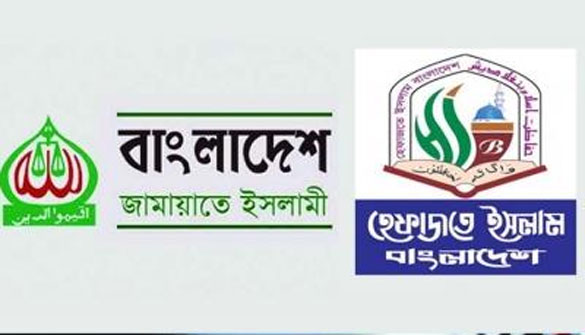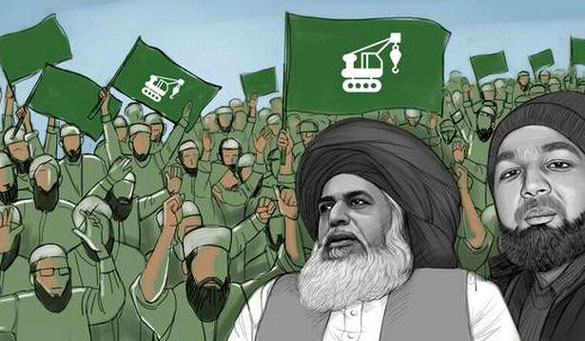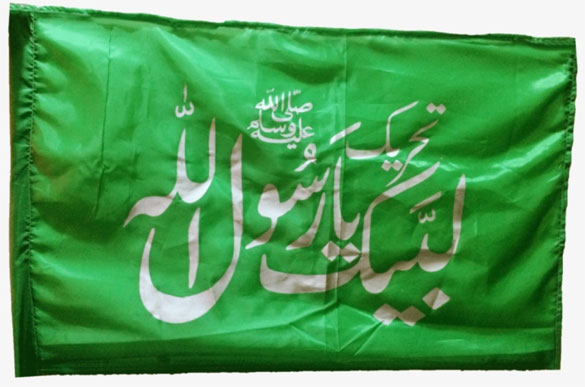Hefazat And TLP Are Being Funded By The Inter-Services Intelligence (ISI) Of Pakistan To Destabilise The Democratic Governments In Pakistan And Bangladesh
Main Points:
1. Anti-India protests in Bangladesh were funded by Pakistan: Bangladesh.
2. Hefazat leaders' link with terrorist organisations is well known.
3. Blasphemy is only a ploy to mobilise Muslim support against the elected governments.
4. Pakistan’s civilian government deferred its decision to lift ban on imports from India under pressure from radical elements supported by ISI.
-----
New Age Islam Staff Writer
26 April 2021
Since November 2020 Bangladesh and Pakistan have witnessed violent protests over blasphemy committed by the French magazine Charlie Hebdo which republished cartoons of Prophet Mohammad pbuh in September 2020. In October a teacher Samuel Patty was killed by a Muslim youth for showing a cartoon of Prophet Mohammad pbuh to the class. French President Emmanuel Macron had defended the magazine's right to expression. This had sparked off protests in some Muslim majority countries and the boycott of French products was observed. The protests were a spontaneous outburst of Muslims worldwide and so gradually died down. But it was not so in Bangladesh and Pakistan. In Bangladesh, huge protests were staged by Hefazat-e-Islam in Dhaka on 2 November. Hefazat demanded expulsion of the French ambassador and closure of French Embassy.
------------------------------------------------------------------------------------
Also Read: Pakistan Crisis: Tahreek-e-Labbaik Pakistan’s Terrorism is Just Part of the Problem
------------------------------------------------------------------------------------
During the same time the radical Islamist group Tehreek-e-Labbaik Pakistan (TLP) held a huge protest meeting in Pakistan's capital Islamabad and demanded closure of French embassy in Pakistan and a boycott of French products.
But these protests did not die down in Pakistan. In April TLP intensified the protests which turned violent and resulted in the death of more than 6 police personnel and injury of more than 800 people. The protesters also damaged public property. They have been demanding the expulsion of French ambassador and boycott of French products. They have also held some policemen hostage. The government of Pakistan had discussion with them to find a solution to the issue but due to their uncompromising attitude the talks failed and the Imran Khan government banned the outfit under anti-terror law and detained its leader Saad Rizvi. His detention sparked off further violent protests and the country has plunged into anarchy and uncertainty.

Logo of Hefazat e Islam
-------
In Bangladesh, after staging protests against Macron's defence of Charlie Hebdo cartoons and his resolve to crack down on Islamists in France, Hefazat got another opportunity to destabilise the Hasina-led Awami League government in the Mujib statue installation issue. The Awami League government had planned to install a number of statues in Dhaka and other towns of Bangladesh as part of 50 year celebration of Bangladesh's independence. Hefazat opposed the plan as it said installing statues was un-Islamic and its leader Junaid Babunagari threatened to pull down the statues. Hefazat staged another series of violent protests in December in which many people were injured and public property was damaged.
Hefazat pushed the country in another series of violent protests in March on the occasion of Indian PM Narendra Modi's visit to Bangladesh on its Independence Day celebrations. Hefazat opposed Modi's visit and denounced Hasina government for hosting the 'enemy of Muslims' Modi. Hefazat staged countrywide protests during which its members attacked railway stations and temples. 13 Hefazat members died in police firing.
Here it can be easily observed that the pattern of the protests are the same. Both the Hefazat in Bangladesh and TLP in Pakistan have made blasphemy and Macron's 'anti-Islam' measures an issue to destabilise elected governments of their respective countries. Hefazat has found different issues --- Blasphemy in France in November, Mujib sculptures in December and Modi visit in March but since TLP of Pakistan did not find similar issues ( Modi did not visit Pakistan) it is keeping the Charlie Hebdo cartoons issue alive to keep the protests going. Imran Khan pointed this out in his recent speech to the nation. He said,
"No such demonstrations or demands to expel the French ambassadors were seen in other countries."
He drew the attention of the protesters towards the economic fall out of their demands. He said:
"When we will expel French ambassador and cut ties it means we will cut ties with the whole of European Union. This means half our textile exports will come down.This will create unemployment and rupee will be under pressure thus creating inflation and poverty. We will be on loosing end not France."
However, this argument has not found favours with the TLP who believe that the only solution to the blasphemy issue is the expulsion of French ambassador and boycott of French products.

Looking back at the happenings in Bangladesh, political circles in the country is agog with rumours of Pakistani supporting and funding in Hefazat -backed unrest in the country specially in the violent protests ahead of and on the day of Modi's visit to Bangladesh. A report in the Economic Times says, "Highly placed sources from Dhaka told ET that the Hasina government is probing the role of the ISI in orchestrating the recent protests. The activities of Pakistan High Commission in Dhaka are being monitored."
Some MPs of Bangladesh also accused Pakistan of funding protests in Bangladesh. Since Pakistan has always tried to create rifts between India and Bangladesh, Pakistan's hand in the continuous protests by Hefazat can not be ruled out.
Now the question arises: Is the ISI also behind 6-month long violent anti-government protests in Pakistan? Pakistan army have always had an upper hand in democratic govrrnments and its policies are decided by the army. Pakistan army's anti-India posturing is known to all because it can't forget its humiliation at the hands of Indian army in 1971. Therefore, it keeps conspiring against India. It especially keeps conspiring to create rift between India and Bangladesh. It also does not want cordial relations between India and Pakistan.
A recent development between India and Pakistan will drive home the point. On 22 March, 2021 India's Prime Minister Narendra Modi wrote a letter to Pakistan's Prime Minister Imran Khan on Pakistan's National Day. Mr Modi wrote:
"As a neighbouring country, India desires cordial relations with the people of Pakistan. For this an environment of trust, devoid of terror and hostility is imperative."
On March 31, 2021, Imran Khan replied to the letter thanking Modi and said, "The people of Pakistan also desire peaceful co-operative relations with all neighbours including India."
Within a couple of days, Pakistan decided to lift its two year ban on import of sugar and cotton from India. This could have heralded a new era in India-Pakistan relations. But the very next day, Pakistan, definitely under pressure from the Army made a U-turn and deferred its decision linking it with the reinstatement of the special status of 'India-administered Kashmir'.

The protests by TLP again intensified in April after the exchange of letters between Modi and Khan and Pakistan government's decision to lift ban on imports from India on April 1.
From these developments, it can be easily construed that the ISI is behind the violent protests in Bangladesh and Pakistan. The link of Hefazat leaders with terrorists have previously come to light. A recent Al Qaida message has asked its followers to sneak into protests and kill protesters and the police to intensify violence. Though Al Qaida has issued this instruction to its sympathisers in the western countries, but from the violent protests in Bangladesh and Pakistan, it seems that this modus operandi is being followed in Muslim countries as well.
In short, protests in Bangladesh and Pakistan are being orchestrated by the ISI and terrorist organisations to destabilise elected democratic governments in both India and Pakistan.
New Age Islam, Islam Online, Islamic Website, African Muslim News, Arab World News, South Asia News, Indian Muslim News, World Muslim News, Women in Islam, Islamic Feminism, Arab Women, Women In Arab, Islamophobia in America, Muslim Women in West, Islam Women and Feminism

No comments:
Post a Comment